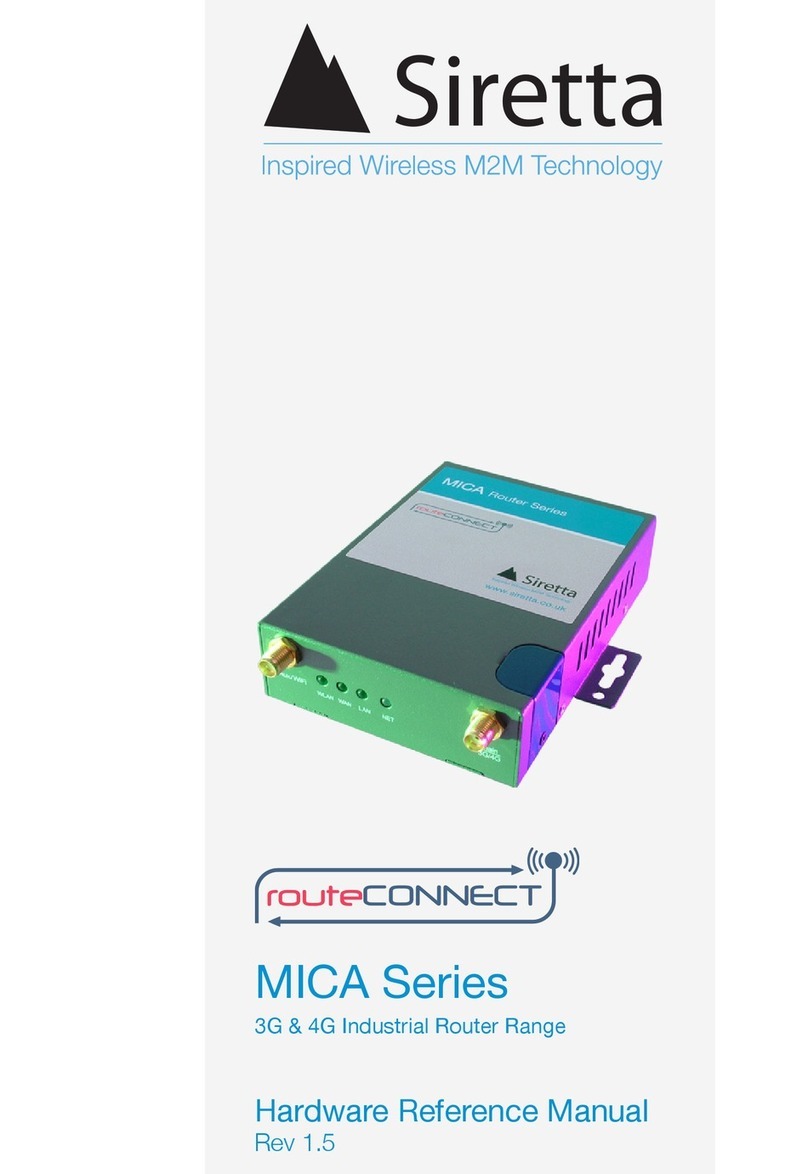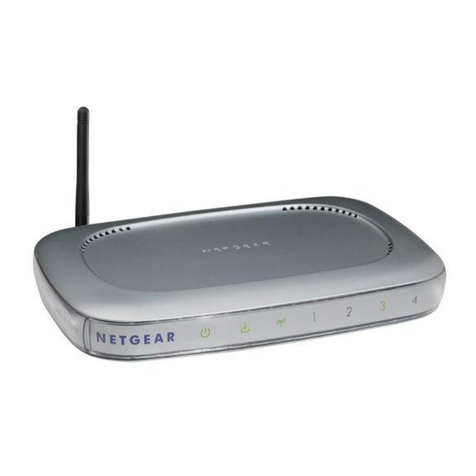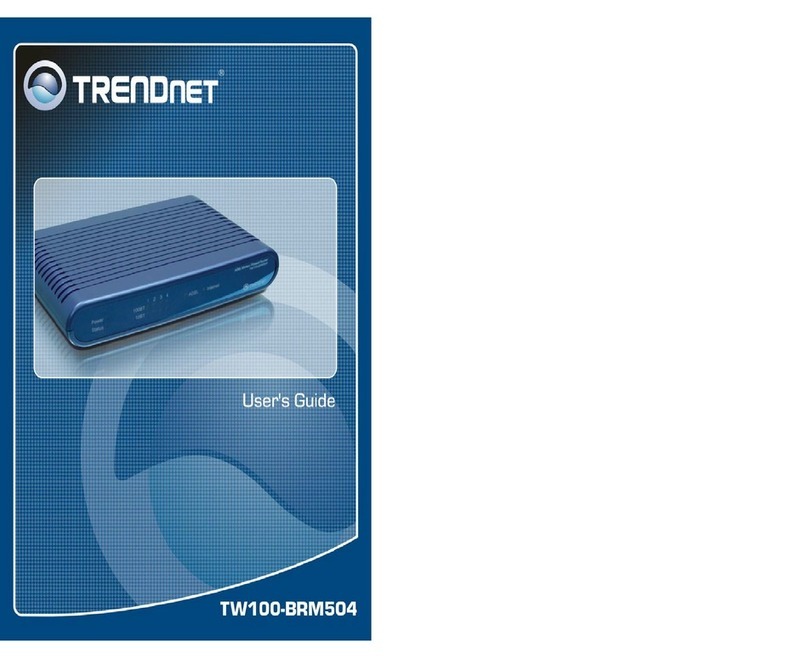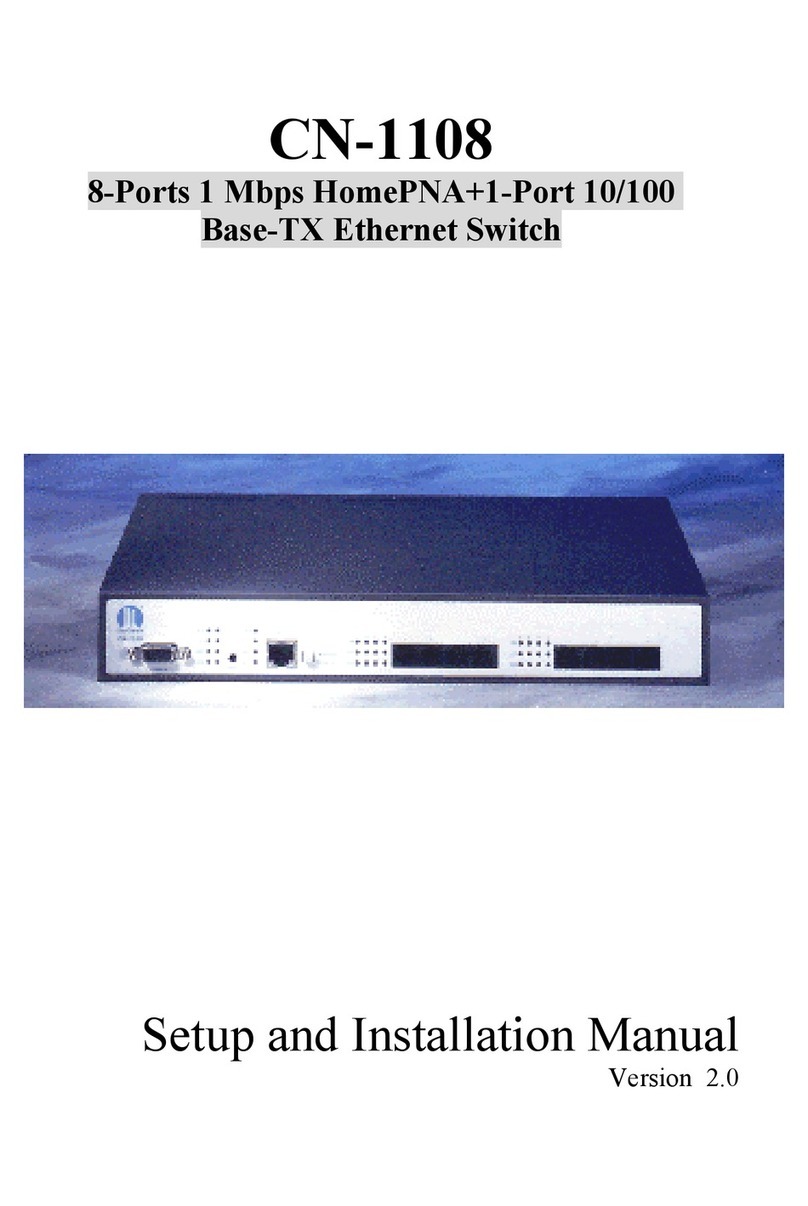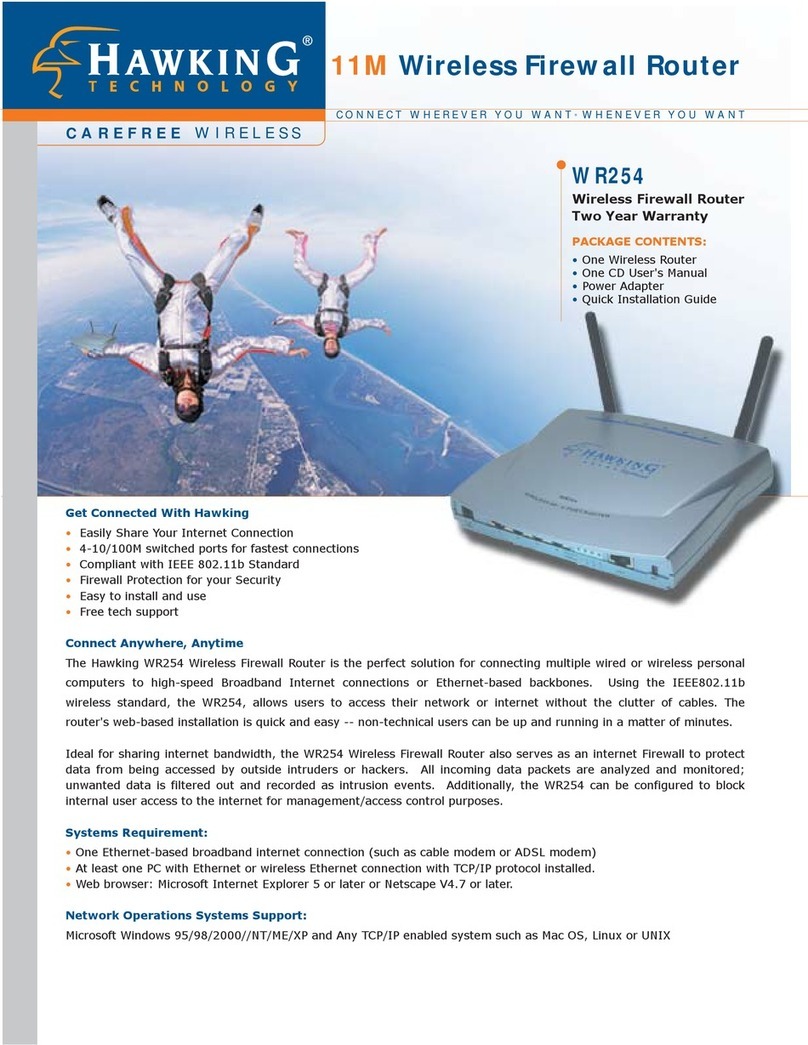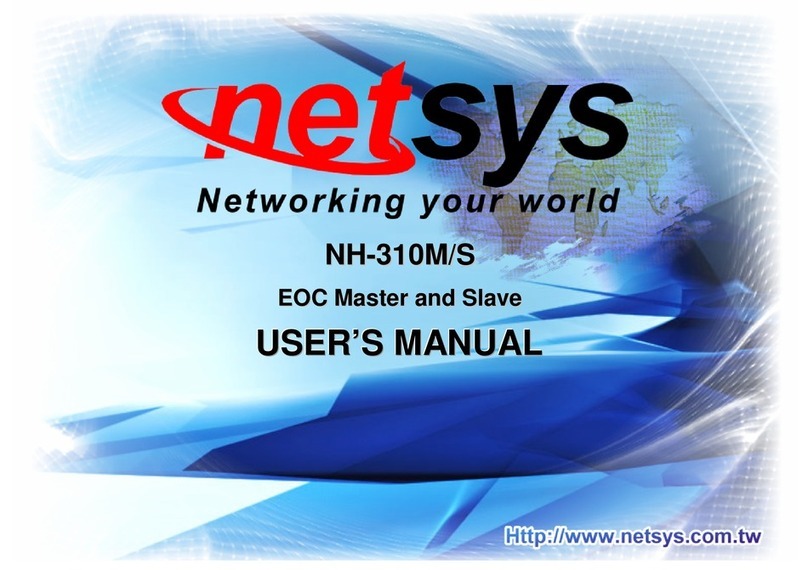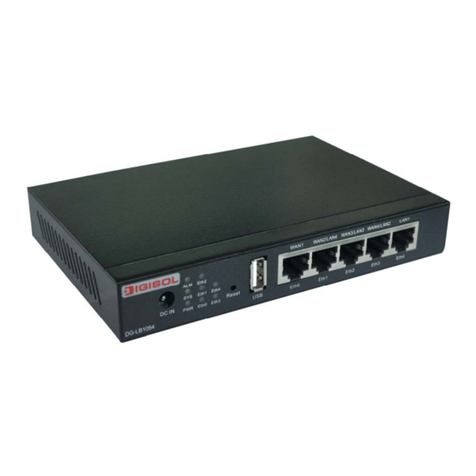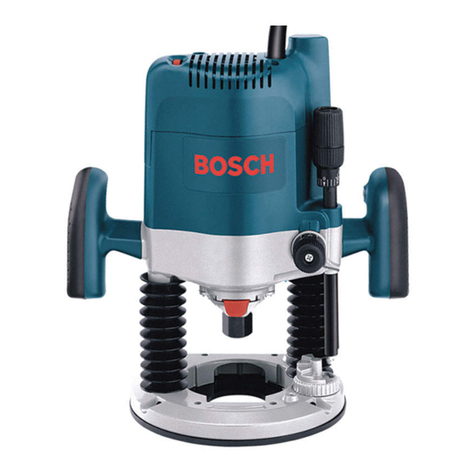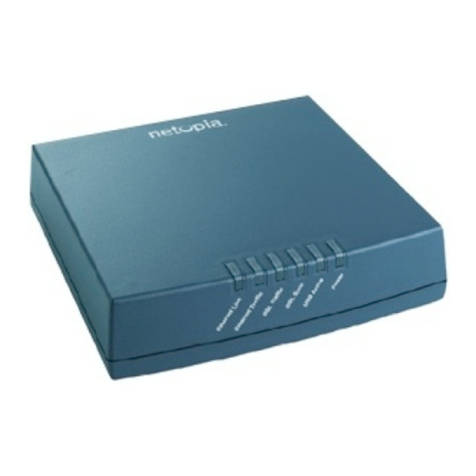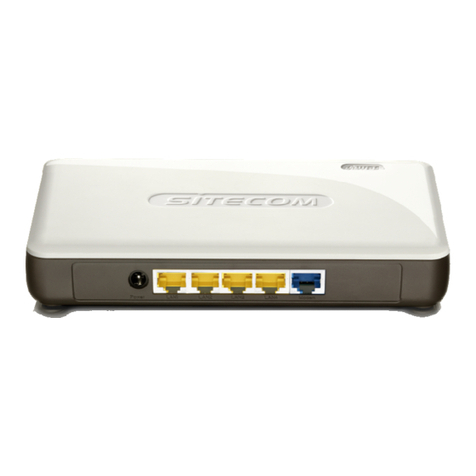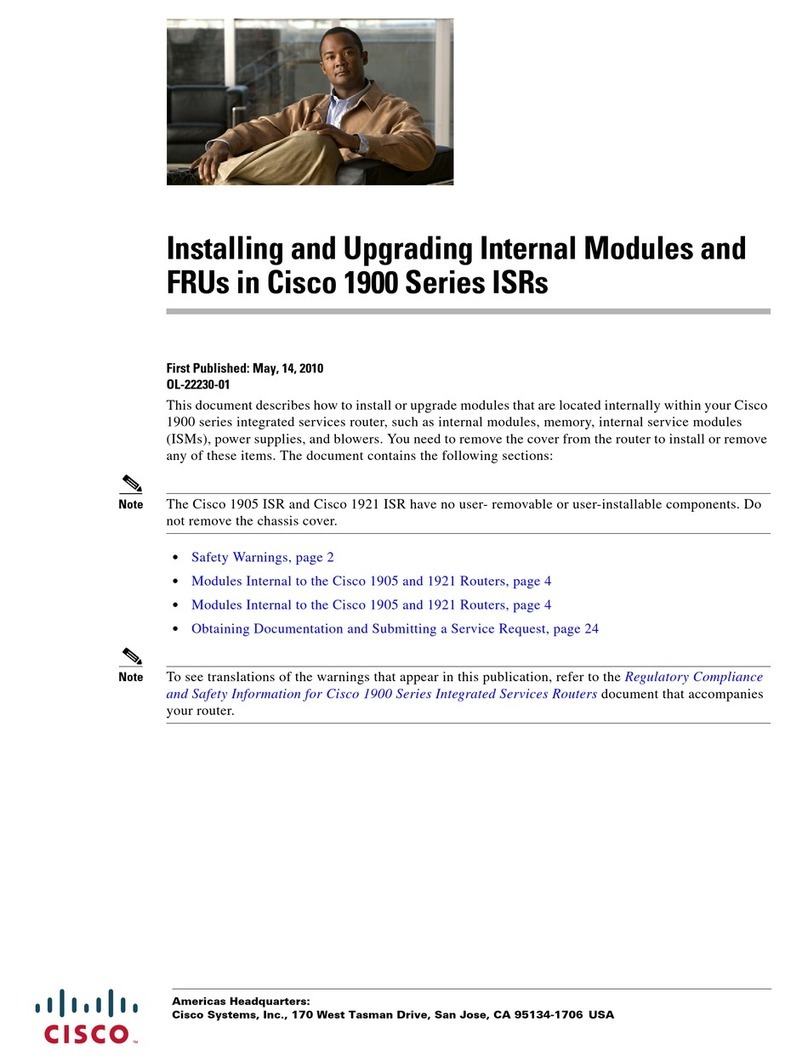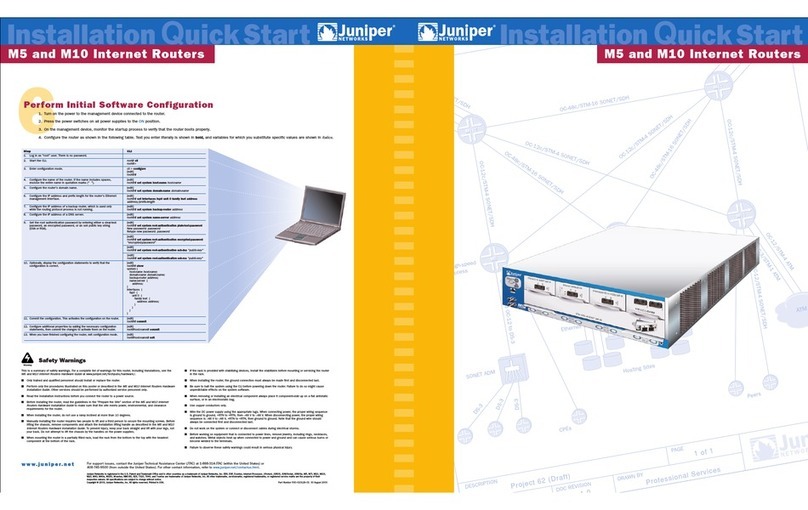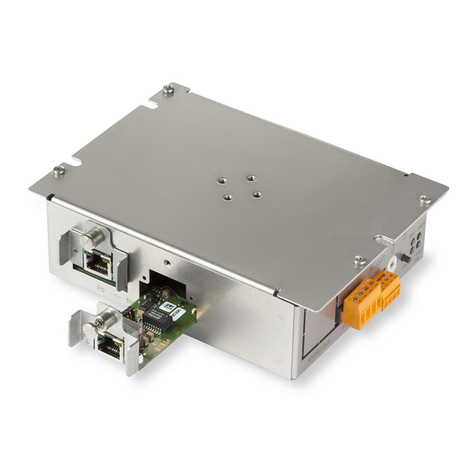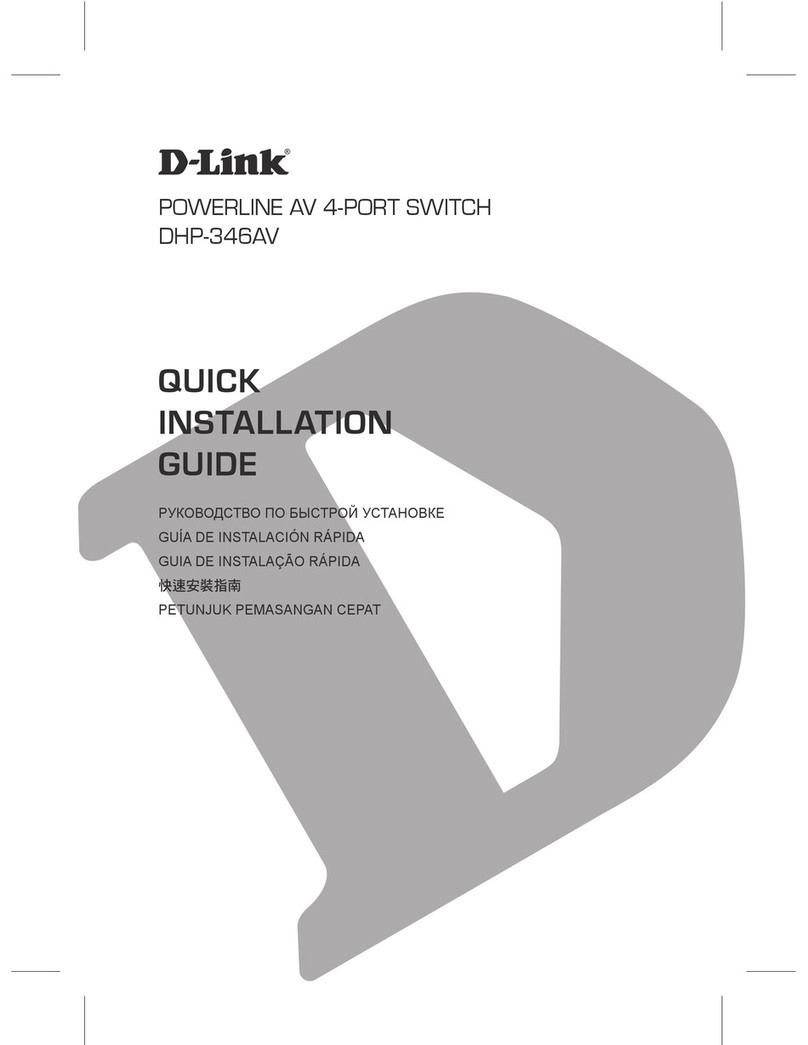Micom NetRunner User manual

Release 5.0
WAN User’s Manual
Part Number 800184850 Rev. A
April 1996

Notice of Filing
Declaration of CE Conformance (for International sales)
A Declaration of CE Conformance is on file at the MICOM addresses shown below. The declaration lists the
models described in this manual. If the unit carries the CE mark, this declaration certifies that it meets the
specific EMC standards required for CE marking. If the product is a module, the module is CEcompliant
only if it is placed in a MICOM CEmarked base unit.
MICOM Communications Corp.
4100 Los Angeles Avenue
Simi Valley, California 930633397
U.S.A.
(805) 5838600
MICOM Communications Corp. (Europe) Ltd.
The Granary
Grange Court
Grange Road
Tongham, Surrey GU10 1DW
England, UK
44 1252 781 777
Any units not carrying the CE approval are not CEcompliant. Modules placed in these units may not meet
emission standards for CE compliance.
Trademark Notice
MICOMr, Marathonr, NetRunnerr, FrameRunnert, STADIAt, NETMant,
rFEATUREPAK, FlashPakt,
tMicroBand ATM, Power Plust, SNAPSt,MICOMrBOX,
a
nd tValUMu
x a
re trademarks or
registered trademarks of MICOM Communications Corp. All other names or trademarks are the true
property of their respective companies.
Notice
Specifications, tolerances, and design characteristics (other than for regulatory requirements) described in
this manual are subject to change without notice.
E1996 MICOM Communications Corp.
All rights reserved
Unpublished rights reserved under the copyright laws of the United States
RESTRICTED RIGHTS LEGEND
Use, duplication, or disclosure by the Government is subject to restrictions as set forth in
subparagraph (c) (1) (ii) of the Rights in Technical Data and Computer Software clause at 252.2277013.

iii
Safety Warnings and Cautions
Various safety agencies request statements of warning or caution to help you
in the safe operation of the MICOM unit. These statements also apply to any
and all modules installed within the unit.
To ensure adequate cooling of the
equipment a 2.0 inch unobstructed
space
must be maintained around
all
sides of the unit.
Um die Kühlung des Gerätes nicht
zu beschränken, ist es notwendig
um
das
Gerät herum an allen Seiten
ca
5 cm Raum zu lassen.
Pour assurer un refroidissement
adéquat, maintenir un espace libre
de 5 cm (2 pouces) tout autour de
l'appareil.
The ac power socket shall be
installed near the equipment and
shall be easily accessible.
Stellen Sie das Gerät in der Nähe
einer geerdeten Schutzkontakt
steckdose so auf, dass diese leicht
erreichbar und zugänglich ist.
Installer la prise AC à proximité de
l'appareil, dans un rayon d'accès
facile.
Installation and access to the
interior of this unit shall be made
only by a qualified technician.
Die Montage und der Zugang ins
Innere des Gerätes sind nur einem
qualifizierten Techniker gestattet.
L'installation et l'ouverture de cet
appareil est permise par un
technicien autorisé seulement.
Connection to the network is to be
disconnected before the (mains) plug
is removed.
Ehe der Netzstecker aus der
Steckdose gezogen wird, müssen
sämtliche
äusserliche
V
erbindungen
vom Gerät getrennt werden.
Avant de débrancher la prise de
courant, assurer que toutes les
connexions externes ont été
déconnecté de l'appareil.
Warning Warnung Avertissement
Remove power plug from the power
socket before performing any service
work on the unit.
Vor öffnen des Gerätes, muss der
Netzstecker aus der Steckdose
gezogen werden.
Débrancher la prise de courant
avant d'entreprendre aucun travail
de réparation de l'appareil.
Lithium Battery
Caution
Lithium Batterie
Warnung
Batterie Au Lithium
Avertissement
Danger of explosion if battery is in
correctly replaced. Replace only
with the same type or equivalent
battery, as recommended by the
manufacturer. Discard used batter
ies according to manufacturer's
instructions.
Explosionsgefahr besteht wenn die
Batterie nicht richtig ersetzt ist.
Die Batterie darf nur mit einer
gleichen oder gleichwertigen
Batterie ersetzt werden.
Un danger d'explosion existe si la
batterie est remplacée incorrecte
ment. Remplacer avec une batterie
identique ou similaire, recomman
dée par le fabriquant. Disposer des
batteries utilisées selon la méthode
prescrite par le fabriquant.
The power supply is autoranging in
this model. Netzteil ist mit automatischer
Umschaltung entsprechend der
Versorgungsspannung versorgt.
Ce modèle s'adapte automatique
ment au courant électrique ou
voltage de la prise murale.
The power supply cordset to be
supplied in Europe must have
0.752mm, 3 conductor HAR" cord
type H05VVF, terminated in a
grounding type Shucko plug on one
end and a molded - on IEC 320
connector on the other end.
Die Netzleitung sollte ein
harmonisierter Typ (HAR) sein, mit
der Bezeichnung H05VVF oder
H05VVH2F
, 3G 0.75
2
mm, mit
einem Schutzkontakt - und einem
Kaltgerätestecker (IEC 320).
En Europe, brancher l'appareil à la
prise murale au moyen d'un fil
HAR" comprenant 3 cables
H05VVF ou H05VVH2F de
0.752mm chacun, avec à une
extremité une prise de terre genre
SHUCKO et à l'autre une prise IEC
320.
Technical Data Technische Daten Donnees Techniques
Input Volts : 100240 Vac
-5%, +10%
Input Current
Marathon
5K Turbo, 10K,
20K
NetRunner
500ET
, 1000E,
2000E : 3A1.5A
Marathon 2K,
2KPlus
, 3K
NetRunner 75E : 2A1A
STADIA
Integration Hub: 6A3A
Frequency :
4763 Hz
Nennspannung : 100240 V
-5%, +10%
Nennstrom
Marathon
5K Turbo, 10K,
20K
NetRunner
500ET
, 1000E,
2000E : 3A1.5A
Marathon 2K,
2KPlus
, 3K
NetRunner 75E : 2A1A
STADIA
Integration Hub: 6A3A
Frequenz :
4763 Hz
Voltage d'Accès : 100240 V
-5%, +10%
Courant d'Accès
Marathon
5K Turbo, 10K,
20K
NetRunner
500ET
, 1000E,
2000E : 3A1.5A
Marathon 2K,
2KPlus
, 3K
NetRunner 75E : 2A1A
STADIA
Integration Hub: 6A3A
Fréquence :
4763 Hz

iv
Notification of FCC Requirements
NOTE: This equipment has been tested and found to comply with the limits for a Class A digital device,
pursuant to Part 15 of the FCC Rules. These limits are designed to provide reasonable protection against
harmful interference when the equipment is operated in a commercial environment. This equipment generates,
uses, and can radiate radio frequency energy and, if not installed and used in accordance with the instruction
manual, may cause harmful interference to radio communications. Operation of this equipment in a residential
area is likely to cause harmful interference in which case the user will be required to correct the interference at
his own expense.
Changes
or modifications to this product, that could increase the amount of Radio Frequency Emissions from this
product, without the expressed written approval of MICOM Communications Corp., could cause the product and
the user to violate the FCC's Rules and Regulations, thus requiring the product to be turned off or disconnected.
If
this unit is used on a DTE which requires use of shielded cables for compliance with FCC Part 15, then use of a
filtered pin connector may be required to maintain FCC compliance. See the Installation section for specific
applications.
Notification of Canadian Requirements
This digital apparatus does not exceed the Class A limits for radio noise emissions from digital apparatus as set
out in the Radio Interference Regulations of the Canadian Department of Communications.
Le présent appareil numérique n'émet pas de bruits radioélectriques dépassant les limites applicables
aux appareils numériques de classe A prescrites dans le règlement sur le brouillage radioélectrique édicté par le
Ministère des Communications du Canada.
United Kingdom Requirement: Interconnection of Ports Warning
Interconnection directly, or by way of other apparatus, of ports marked SAFETY WARNING. See instructions
for use", with ports marked or not so marked may produce hazardous conditions on the network. The advice of a
competent engineer must be obtained before such a connection is made. None of the ports provide isolation
sufficient to satisfy the relevant parts of BS 6301. Apparatus connected to the ports, must either have been
approved to the relevant parts of BS 6301 or to have been previously evaluated against BS 6301 British Telecom
Technical Guides 2 or 26, and given permission to attach. Other usage will invalidate any approval given to this
apparatus.
Any or all of the ports on the following modules may be configured as nonnetwork ports:
DCommunications Control Modules (CCM): 6 Dtype ports
DUp to 4 Channel Expansion Modules (CEM): up to 6 Dtype or 12 RJ45 ports
DLAN modules (including RTS, RLB, or IRM): AUI, BNC, and 8pin modular jack ports
DNMS module: 1 log port, 1 command port
DUp to 4 2port voice cards
DAlarm port

vi
Contents
Introduction – 1
Features 1-2.
. . . . . . . . . . . . . . . . . . . . . . . . . . . . . . . . . . . . . . . . . . . . . . . . . . . . . . . . . . . . . . . . . . . . .
Model Numbers 1-4.
. . . . . . . . . . . . . . . . . . . . . . . . . . . . . . . . . . . . . . . . . . . . . . . . . . . . . . . . . . . . . . .
Software 1-5
. . . . . . . . . . . . . . . . . . . . . . . . . . . . . . . . . . . . . . . . . . . . . . . . . . . . . . . . . . . . . . . . . . . . . .
All NetRunner Models, except 75E 1-5.
. . . . . . . . . . . . . . . . . . . . . . . . . . . . . . . . . . . . . . . . . . .
NetRunner Model 75E 1-5.
. . . . . . . . . . . . . . . . . . . . . . . . . . . . . . . . . . . . . . . . . . . . . . . . . . . . . .
Compatibility 1-5.
. . . . . . . . . . . . . . . . . . . . . . . . . . . . . . . . . . . . . . . . . . . . . . . . . . . . . . . . . . . . . . . . .
Compatibility Across the Wide Area Network (WAN) link 1-6.
. . . . . . . . . . . . . . . . . . . . . . . .
Compatibility On the LAN Segment 1-6.
. . . . . . . . . . . . . . . . . . . . . . . . . . . . . . . . . . . . . . . . . . .
Compatibility in Mixed Networks 1-6.
. . . . . . . . . . . . . . . . . . . . . . . . . . . . . . . . . . . . . . . . . . . . .
System Compatibility 1-6.
. . . . . . . . . . . . . . . . . . . . . . . . . . . . . . . . . . . . . . . . . . . . . . . . . . . . . . .
Manual Companions 1-7.
. . . . . . . . . . . . . . . . . . . . . . . . . . . . . . . . . . . . . . . . . . . . . . . . . . . . . . . . . . .
Optional System Manual 1-7.
. . . . . . . . . . . . . . . . . . . . . . . . . . . . . . . . . . . . . . . . . . . . . . . . . . . . . . . .
Terminology 1-8
. . . . . . . . . . . . . . . . . . . . . . . . . . . . . . . . . . . . . . . . . . . . . . . . . . . . . . . . . . . . . . . . . . . .
Symbols 1-8
. . . . . . . . . . . . . . . . . . . . . . . . . . . . . . . . . . . . . . . . . . . . . . . . . . . . . . . . . . . . . . . . . . . . . . .
Basic Operation 1-9.
. . . . . . . . . . . . . . . . . . . . . . . . . . . . . . . . . . . . . . . . . . . . . . . . . . . . . . . . . . . . . . .
Options 1-10
. . . . . . . . . . . . . . . . . . . . . . . . . . . . . . . . . . . . . . . . . . . . . . . . . . . . . . . . . . . . . . . . . . . . . . .
Module Locations 1-12.
. . . . . . . . . . . . . . . . . . . . . . . . . . . . . . . . . . . . . . . . . . . . . . . . . . . . . . . . . . . . . .
Populating the NetRunner (Module Possibilities and Quantities) 1-12.
. . . . . . . . . . . . . . . . . .
Hardware Conventions 1-14.
. . . . . . . . . . . . . . . . . . . . . . . . . . . . . . . . . . . . . . . . . . . . . . . . . . . . . . . . .
Network Planning – 2
Network Topologies 2-1.
. . . . . . . . . . . . . . . . . . . . . . . . . . . . . . . . . . . . . . . . . . . . . . . . . . . . . . . . . . . .
Terminated or Switched 2-2.
. . . . . . . . . . . . . . . . . . . . . . . . . . . . . . . . . . . . . . . . . . . . . . . . . . . . .
Placement in the Network 2-3.
. . . . . . . . . . . . . . . . . . . . . . . . . . . . . . . . . . . . . . . . . . . . . . .
Point-to-Point 2-4
. . . . . . . . . . . . . . . . . . . . . . . . . . . . . . . . . . . . . . . . . . . . . . . . . . . . . . . . . . . . . . .
String 2-5
. . . . . . . . . . . . . . . . . . . . . . . . . . . . . . . . . . . . . . . . . . . . . . . . . . . . . . . . . . . . . . . . . . . . . .
Star 2-6
. . . . . . . . . . . . . . . . . . . . . . . . . . . . . . . . . . . . . . . . . . . . . . . . . . . . . . . . . . . . . . . . . . . . . . .
Multi-site 2-7
. . . . . . . . . . . . . . . . . . . . . . . . . . . . . . . . . . . . . . . . . . . . . . . . . . . . . . . . . . . . . . . . . . .
Distributed Star 2-8.
. . . . . . . . . . . . . . . . . . . . . . . . . . . . . . . . . . . . . . . . . . . . . . . . . . . . . . . . . . . .
Delta, Ring and Full-Mesh 2-9.
. . . . . . . . . . . . . . . . . . . . . . . . . . . . . . . . . . . . . . . . . . . . . . . . . . .
Frame Relay 2-10.
. . . . . . . . . . . . . . . . . . . . . . . . . . . . . . . . . . . . . . . . . . . . . . . . . . . . . . . . . . . . . .
Planning Prerequisites 2-11.
. . . . . . . . . . . . . . . . . . . . . . . . . . . . . . . . . . . . . . . . . . . . . . . . . . . . . . . . .
Clusters 2-12
. . . . . . . . . . . . . . . . . . . . . . . . . . . . . . . . . . . . . . . . . . . . . . . . . . . . . . . . . . . . . . . . . . . . . . .
Communicating Between Clusters 2-15.
. . . . . . . . . . . . . . . . . . . . . . . . . . . . . . . . . . . . . . . . . . . .
Planning the NetRunner Node Numbers and Node IDs 2-15.
. . . . . . . . . . . . . . . . . . . . . . . . . . . . .
Syntax 2-16
. . . . . . . . . . . . . . . . . . . . . . . . . . . . . . . . . . . . . . . . . . . . . . . . . . . . . . . . . . . . . . . . . . . . .
Channel Prioritization on Interconnect Links 2-16.
. . . . . . . . . . . . . . . . . . . . . . . . . . . . . . . . . . . . . . .

vii
Contents
Startup – 3
Command Mode 3-2.
. . . . . . . . . . . . . . . . . . . . . . . . . . . . . . . . . . . . . . . . . . . . . . . . . . . . . . . . . . . . . . .
Local Channel Configuration 3-4.
. . . . . . . . . . . . . . . . . . . . . . . . . . . . . . . . . . . . . . . . . . . . . . . . .
Command Facility 3-5.
. . . . . . . . . . . . . . . . . . . . . . . . . . . . . . . . . . . . . . . . . . . . . . . . . . . . . . . . . . . . .
Configure Local Node 3-6.
. . . . . . . . . . . . . . . . . . . . . . . . . . . . . . . . . . . . . . . . . . . . . . . . . . . . . . . . . .
Node Numbering and Naming from the Command Facility 3-7.
. . . . . . . . . . . . . . . . . . . . . . .
Channel Syntax Information 3-8.
. . . . . . . . . . . . . . . . . . . . . . . . . . . . . . . . . . . . . . . . . . . . . . . . . . . . .
Configuring a Mesh Node 3-9.
. . . . . . . . . . . . . . . . . . . . . . . . . . . . . . . . . . . . . . . . . . . . . . . . . . . . . . .
Real Time Clock 3-10.
. . . . . . . . . . . . . . . . . . . . . . . . . . . . . . . . . . . . . . . . . . . . . . . . . . . . . . . . . . . . . . .
Network Time Master 3-10.
. . . . . . . . . . . . . . . . . . . . . . . . . . . . . . . . . . . . . . . . . . . . . . . . . . . . . . .
Reset’s
Ef
fect on Network Time 3-11.
. . . . . . . . . . . . . . . . . . . . . . . . . . . . . . . . . . . . . . . . . . . . . .
Configuration 3-12
. . . . . . . . . . . . . . . . . . . . . . . . . . . . . . . . . . . . . . . . . . . . . . . . . . . . . . . . . . . . . . .
Link and Port Configuration – 4
Port Configuration 4-1.
. . . . . . . . . . . . . . . . . . . . . . . . . . . . . . . . . . . . . . . . . . . . . . . . . . . . . . . . . . . . .
Port Considerations 4-4.
. . . . . . . . . . . . . . . . . . . . . . . . . . . . . . . . . . . . . . . . . . . . . . . . . . . . . . . .
Interconnect Link 4-6.
. . . . . . . . . . . . . . . . . . . . . . . . . . . . . . . . . . . . . . . . . . . . . . . . . . . . . . . . . . .
Local Interconnect Link 4-7.
. . . . . . . . . . . . . . . . . . . . . . . . . . . . . . . . . . . . . . . . . . . . . . . . . .
Bandwidth on Demand 4-9.
. . . . . . . . . . . . . . . . . . . . . . . . . . . . . . . . . . . . . . . . . . . . . . . . . . . . . . . . .
Secondary Interconnect Link 4-9.
. . . . . . . . . . . . . . . . . . . . . . . . . . . . . . . . . . . . . . . . . . . . . . . .
Configuring a Secondary Interconnect Link 4-11.
. . . . . . . . . . . . . . . . . . . . . . . . . . . . . . . .
Deassigning a Secondary Link 4-13.
. . . . . . . . . . . . . . . . . . . . . . . . . . . . . . . . . . . . . . . . . . .
Modes of Operation 4-13.
. . . . . . . . . . . . . . . . . . . . . . . . . . . . . . . . . . . . . . . . . . . . . . . . . . . . . . . .
Time of Day 4-14.
. . . . . . . . . . . . . . . . . . . . . . . . . . . . . . . . . . . . . . . . . . . . . . . . . . . . . . . . . . .
Backup Mode 4-14.
. . . . . . . . . . . . . . . . . . . . . . . . . . . . . . . . . . . . . . . . . . . . . . . . . . . . . . . . . .
Utilization Threshold Mode 4-15.
. . . . . . . . . . . . . . . . . . . . . . . . . . . . . . . . . . . . . . . . . . . . . .
Time of Day 4-17.
. . . . . . . . . . . . . . . . . . . . . . . . . . . . . . . . . . . . . . . . . . . . . . . . . . . . . . . . . . .
Setting up the Time of Day Schedule 4-17.
. . . . . . . . . . . . . . . . . . . . . . . . . . . . . . . . . . . . . . . . .
Cancelling the Time of Day Schedule 4-19.
. . . . . . . . . . . . . . . . . . . . . . . . . . . . . . . . . . . . .
Displaying a Schedule 4-19.
. . . . . . . . . . . . . . . . . . . . . . . . . . . . . . . . . . . . . . . . . . . . . . . . . .
Interconnect Link and Time of Day Operation 4-20.
. . . . . . . . . . . . . . . . . . . . . . . . . . . . . . . . . .
Activating Time of Day Operation on an Interconnect Link 4-20.
. . . . . . . . . . . . . . . . . . .
Disabling the Time of Day Operation on an Interconnect Link 4-20.
. . . . . . . . . . . . . . . . .
Secondary Link and Time of Day Operation 4-21.
. . . . . . . . . . . . . . . . . . . . . . . . . . . . . . . . . . .
Enabling the Time of Day Operation on a Secondary Interconnect Link 4-21.
. . . . . . . .
Disabling the Time of Day Operation on a Secondary Interconnect Link 4-21.
. . . . . . . .
Force On – Link Activation 4-22.
. . . . . . . . . . . . . . . . . . . . . . . . . . . . . . . . . . . . . . . . . . . . . . .
Forcing on a Link 4-22.
. . . . . . . . . . . . . . . . . . . . . . . . . . . . . . . . . . . . . . . . . . . . . . . . . . . . . . .
Disabling Forced-on Operation 4-23.
. . . . . . . . . . . . . . . . . . . . . . . . . . . . . . . . . . . . . . . . . . .

viii
Contents
Link and Port Configuration – 4 (cont’d)
Frame Relay Link 4-23.
. . . . . . . . . . . . . . . . . . . . . . . . . . . . . . . . . . . . . . . . . . . . . . . . . . . . . . . . . . . . . .
Configuration Prerequisites 4-26.
. . . . . . . . . . . . . . . . . . . . . . . . . . . . . . . . . . . . . . . . . . . . . . . . . .
Frame Relay Parameters 4-27.
. . . . . . . . . . . . . . . . . . . . . . . . . . . . . . . . . . . . . . . . . . . . . . . . . . .
Frame Relay Link Parameters 4-28.
. . . . . . . . . . . . . . . . . . . . . . . . . . . . . . . . . . . . . . . . . . . . . . .
Local Management Protocol Parameters 4-29.
. . . . . . . . . . . . . . . . . . . . . . . . . . . . . . . . . . . . . .
Frame Relay Link Reset 4-30.
. . . . . . . . . . . . . . . . . . . . . . . . . . . . . . . . . . . . . . . . . . . . . . . . . . . .
DLCI Configuration 4-30.
. . . . . . . . . . . . . . . . . . . . . . . . . . . . . . . . . . . . . . . . . . . . . . . . . . . . . . . . .
Level 2 Protocol 4-31.
. . . . . . . . . . . . . . . . . . . . . . . . . . . . . . . . . . . . . . . . . . . . . . . . . . . . . . . . . . .
Frame Relay Parameters 4-31.
. . . . . . . . . . . . . . . . . . . . . . . . . . . . . . . . . . . . . . . . . . . . . . . . . . .
Virtual Links 4-32.
. . . . . . . . . . . . . . . . . . . . . . . . . . . . . . . . . . . . . . . . . . . . . . . . . . . . . . . . . . . . . . .
Pass-Through Applications: Attaching Frame Relay Access Devices (FRADs) 4-32.
. . . . .
Resetting the DLCI 4-34.
. . . . . . . . . . . . . . . . . . . . . . . . . . . . . . . . . . . . . . . . . . . . . . . . . . . . . . . . .
List DLCI 4-34.
. . . . . . . . . . . . . . . . . . . . . . . . . . . . . . . . . . . . . . . . . . . . . . . . . . . . . . . . . . . . . . . . . .
Remote Configuration 4-35.
. . . . . . . . . . . . . . . . . . . . . . . . . . . . . . . . . . . . . . . . . . . . . . . . . . . . . . . . . .
Remote NetRunner Configuration 4-35.
. . . . . . . . . . . . . . . . . . . . . . . . . . . . . . . . . . . . . . . . . . . .
Resetting the Unit 4-36.
. . . . . . . . . . . . . . . . . . . . . . . . . . . . . . . . . . . . . . . . . . . . . . . . . . . . . . . . . . . . .
Reset 4-37
. . . . . . . . . . . . . . . . . . . . . . . . . . . . . . . . . . . . . . . . . . . . . . . . . . . . . . . . . . . . . . . . . . . . . .
Data Channels and Switching Configuration – 5
Port Configuration Menu 5-1.
. . . . . . . . . . . . . . . . . . . . . . . . . . . . . . . . . . . . . . . . . . . . . . . . . . . . . . . .
Sync Channels 5-2.
. . . . . . . . . . . . . . . . . . . . . . . . . . . . . . . . . . . . . . . . . . . . . . . . . . . . . . . . . . . . . . . .
Sync Channel Protocol Menu 5-3.
. . . . . . . . . . . . . . . . . . . . . . . . . . . . . . . . . . . . . . . . . . . . . . . .
Sync Channel Characteristics 5-4.
. . . . . . . . . . . . . . . . . . . . . . . . . . . . . . . . . . . . . . . . . . . . . . . .
Sync Bandwidth Management 5-9.
. . . . . . . . . . . . . . . . . . . . . . . . . . . . . . . . . . . . . . . . . . . . . . .
Control Signals 5-10.
. . . . . . . . . . . . . . . . . . . . . . . . . . . . . . . . . . . . . . . . . . . . . . . . . . . . . . . . . . . .
To DTE/To DCE Channels 5-10.
. . . . . . . . . . . . . . . . . . . . . . . . . . . . . . . . . . . . . . . . . . . . . . . . . . .
Channel Clocking Signals 5-13.
. . . . . . . . . . . . . . . . . . . . . . . . . . . . . . . . . . . . . . . . . . . . . . . . . . .
Copy Channel Parameters 5-14.
. . . . . . . . . . . . . . . . . . . . . . . . . . . . . . . . . . . . . . . . . . . . . . . . . . . . . .
Async Channels 5-15.
. . . . . . . . . . . . . . . . . . . . . . . . . . . . . . . . . . . . . . . . . . . . . . . . . . . . . . . . . . . . . . .
Async Channel Characteristics 5-16.
. . . . . . . . . . . . . . . . . . . . . . . . . . . . . . . . . . . . . . . . . . . . . . .
Autobaud Rate Detection (ABR) 5-17.
. . . . . . . . . . . . . . . . . . . . . . . . . . . . . . . . . . . . . . . . . .
Code Level and Parity Conversion 5-18.
. . . . . . . . . . . . . . . . . . . . . . . . . . . . . . . . . . . . . . . .
Async Channel Features 5-19.
. . . . . . . . . . . . . . . . . . . . . . . . . . . . . . . . . . . . . . . . . . . . . . . . . . . .
Async Channel Extended Features 5-20.
. . . . . . . . . . . . . . . . . . . . . . . . . . . . . . . . . . . . . . . . . . .
Switching Configuration 5-21.
. . . . . . . . . . . . . . . . . . . . . . . . . . . . . . . . . . . . . . . . . . . . . . . . . . . . . . . .
Switching Control 5-21.
. . . . . . . . . . . . . . . . . . . . . . . . . . . . . . . . . . . . . . . . . . . . . . . . . . . . . . . . . .
Force Connections 5-22.
. . . . . . . . . . . . . . . . . . . . . . . . . . . . . . . . . . . . . . . . . . . . . . . . . . . . .
Force Connect Procedure 5-22.
. . . . . . . . . . . . . . . . . . . . . . . . . . . . . . . . . . . . . . . . . . . . . . .
Disconnecting Force Connections 5-23.
. . . . . . . . . . . . . . . . . . . . . . . . . . . . . . . . . . . . . . . .
Synchronous Connections 5-24.
. . . . . . . . . . . . . . . . . . . . . . . . . . . . . . . . . . . . . . . . . . . . . . . . . . . . . .

ix
Contents
Data Channels and Switching Configuration – 5 (continued)
Asynchronous Connections 5-24.
. . . . . . . . . . . . . . . . . . . . . . . . . . . . . . . . . . . . . . . . . . . . . . . . . . . . .
Async Force Connections 5-25.
. . . . . . . . . . . . . . . . . . . . . . . . . . . . . . . . . . . . . . . . . . . . . . . . . . .
Classes 5-25
. . . . . . . . . . . . . . . . . . . . . . . . . . . . . . . . . . . . . . . . . . . . . . . . . . . . . . . . . . . . . . . . . . . .
How the Class Request Works 5-26.
. . . . . . . . . . . . . . . . . . . . . . . . . . . . . . . . . . . . . . . . . . . . . . .
Planning a Class 5-27.
. . . . . . . . . . . . . . . . . . . . . . . . . . . . . . . . . . . . . . . . . . . . . . . . . . . . . . .
Class Names 5-27.
. . . . . . . . . . . . . . . . . . . . . . . . . . . . . . . . . . . . . . . . . . . . . . . . . . . . . . . . . .
Password Protection 5-27.
. . . . . . . . . . . . . . . . . . . . . . . . . . . . . . . . . . . . . . . . . . . . . . . . . . . .
Class Message 5-28.
. . . . . . . . . . . . . . . . . . . . . . . . . . . . . . . . . . . . . . . . . . . . . . . . . . . . . . . .
Configuring the Classes 5-28.
. . . . . . . . . . . . . . . . . . . . . . . . . . . . . . . . . . . . . . . . . . . . . . . . .
Switching Parameters 5-30.
. . . . . . . . . . . . . . . . . . . . . . . . . . . . . . . . . . . . . . . . . . . . . . . . . . . . . . . . . .
Connect/Disconnect Protocol, Channel Interfaces 5-31.
. . . . . . . . . . . . . . . . . . . . . . . . . . . . . .
Feature Matching Capability 5-32.
. . . . . . . . . . . . . . . . . . . . . . . . . . . . . . . . . . . . . . . . . . . . . . . . .
Making a Connection 5-32.
. . . . . . . . . . . . . . . . . . . . . . . . . . . . . . . . . . . . . . . . . . . . . . . . . . . . . . . . . . .
Force Connection 5-32.
. . . . . . . . . . . . . . . . . . . . . . . . . . . . . . . . . . . . . . . . . . . . . . . . . . . . . . . . . .
Initial Connection Procedure 5-32.
. . . . . . . . . . . . . . . . . . . . . . . . . . . . . . . . . . . . . . . . . . . . . . . . .
Fixed Destination Connection 5-32.
. . . . . . . . . . . . . . . . . . . . . . . . . . . . . . . . . . . . . . . . . . . . . . . .
Class Connection 5-33.
. . . . . . . . . . . . . . . . . . . . . . . . . . . . . . . . . . . . . . . . . . . . . . . . . . . . . . . . . .
Node/Class Connection 5-33.
. . . . . . . . . . . . . . . . . . . . . . . . . . . . . . . . . . . . . . . . . . . . . . . . . . . . .
Matrix Connection 5-34.
. . . . . . . . . . . . . . . . . . . . . . . . . . . . . . . . . . . . . . . . . . . . . . . . . . . . . . . . . .
Port Contention/Queueing 5-35.
. . . . . . . . . . . . . . . . . . . . . . . . . . . . . . . . . . . . . . . . . . . . . . . . . . . . . .
LCD/Keypad – 6
(Not for NR75E model)
Blinking Backlight 6-1.
. . . . . . . . . . . . . . . . . . . . . . . . . . . . . . . . . . . . . . . . . . . . . . . . . . . . . . . . . . . . . .
Keypad Reset 6-2.
. . . . . . . . . . . . . . . . . . . . . . . . . . . . . . . . . . . . . . . . . . . . . . . . . . . . . . . . . . . . . . . . .
LCD/Keypad Password Protection 6-2.
. . . . . . . . . . . . . . . . . . . . . . . . . . . . . . . . . . . . . . . . . . . . . . .
Command Facility Administration – 7
Command Facility Passwords 7-1.
. . . . . . . . . . . . . . . . . . . . . . . . . . . . . . . . . . . . . . . . . . . . . . . . . . .
Syntax for Global and Status Passwords 7-1.
. . . . . . . . . . . . . . . . . . . . . . . . . . . . . . . . . . . . . .
Global and Status Password Configuration Procedure 7-2.
. . . . . . . . . . . . . . . . . . . . . . . . . .
Configuring the Command Facility Parameters 7-2.
. . . . . . . . . . . . . . . . . . . . . . . . . . . . . . . . . . . .
Reset 7-3
. . . . . . . . . . . . . . . . . . . . . . . . . . . . . . . . . . . . . . . . . . . . . . . . . . . . . . . . . . . . . . . . . . . . . . . . .
Hardware Reset on NetRunner Unit 7-3.
. . . . . . . . . . . . . . . . . . . . . . . . . . . . . . . . . . . . . . . . . .
Command Facility Reset 7-4.
. . . . . . . . . . . . . . . . . . . . . . . . . . . . . . . . . . . . . . . . . . . . . . . . . . . .
Downloading Code 7-6.
. . . . . . . . . . . . . . . . . . . . . . . . . . . . . . . . . . . . . . . . . . . . . . . . . . . . . . . . . . . .
$DLD Facility 7-6.
. . . . . . . . . . . . . . . . . . . . . . . . . . . . . . . . . . . . . . . . . . . . . . . . . . . . . . . . . . . . . .
Activating Downloaded Code 7-7.
. . . . . . . . . . . . . . . . . . . . . . . . . . . . . . . . . . . . . . . . . . . . . . . .
View Configuration 7-8.
. . . . . . . . . . . . . . . . . . . . . . . . . . . . . . . . . . . . . . . . . . . . . . . . . . . . . . . . . . . . .
Status/Statistics 7-9
. . . . . . . . . . . . . . . . . . . . . . . . . . . . . . . . . . . . . . . . . . . . . . . . . . . . . . . . . . . . . . . .
System Statistics Reports 7-10.
. . . . . . . . . . . . . . . . . . . . . . . . . . . . . . . . . . . . . . . . . . . . . . . . . . .
Channel Administration 7-11.
. . . . . . . . . . . . . . . . . . . . . . . . . . . . . . . . . . . . . . . . . . . . . . . . . . . . . . . . .
Determining What Hardware You Have 7-12.
. . . . . . . . . . . . . . . . . . . . . . . . . . . . . . . . . . . . . . . . . . .

x
Contents
Worksheets – A
Messages – B
Screen Display Messages B-2.
. . . . . . . . . . . . . . . . . . . . . . . . . . . . . . . . . . . . . . . . . . . . . . . . . . . . . .
LCD Messages B-16.
. . . . . . . . . . . . . . . . . . . . . . . . . . . . . . . . . . . . . . . . . . . . . . . . . . . . . . . . . . . . . . . .
Specifications – C
Physical Specifications C-1.
. . . . . . . . . . . . . . . . . . . . . . . . . . . . . . . . . . . . . . . . . . . . . . . . . . . . . . . . .
Functional Specifications C-3.
. . . . . . . . . . . . . . . . . . . . . . . . . . . . . . . . . . . . . . . . . . . . . . . . . . . . . . .
Asynchronous Channel Specifications C-6.
. . . . . . . . . . . . . . . . . . . . . . . . . . . . . . . . . . . . . . . .
Synchronous Channel Specifications C-6.
. . . . . . . . . . . . . . . . . . . . . . . . . . . . . . . . . . . . . . . . .
Defaults C-8
. . . . . . . . . . . . . . . . . . . . . . . . . . . . . . . . . . . . . . . . . . . . . . . . . . . . . . . . . . . . . . . . . . . . . . .
Glossary
Index

1-1
Introduction 1
The NetRunner Integration Router is a part of MICOM's family of integration
products designed to provide networking flexibility and costsavings solutions
for your internetworking needs. The NetRunner Integration Routers allow
Local Area Networks (LANs) to connect over any distance using lowcost
leased lines and/or frame relay links. This permits a device attached to a
Local Area Network (LAN) at one site (for example, Los Angeles) to
communicate with a device attached to a LAN at another site (for example,
London).
The NetRunner features MICOM's EasyRouter technology. EasyRouter is
actually a combination of several technologies that achieve the same traffic
forwarding efficiency and LAN segment isolation as traditional routing,
without the effort of network reconfiguration and maintenance.
An additional attraction of the NetRunner is its ability to integrate interoffice
voice, fax and legacy data (sync and async) with Local Area Network (LAN)
traffic, sending it all over the same leased line that handles the bridge and
routing activities.
NetRunner
Integration
Router
NetRunner Integration Router Model

NetRunner
W
AN User’
s Manual
Introduction
1-2
Features
The NetRunner offers the following in its features package:
DEasyRouter technology consisting of the following features:
- ARP spoofing for TCP/IP networks, a MICOMdeveloped software
algorithm which limits broadcast traffic and storms.
- SAP/RIP spoofing for Novell IPX networks, a MICOMdeveloped
software algorithm which limits broadcast traffic and storms.
- WAN optimization, for Novell IPX networks, reducing WAN
bandwidth requirements when IPX routing or SAP/RIP spoofing is
enabled.
- Intelligent multisite bridging, for all protocols, which learns the
WAN paths leading to specific devices and forwards traffic only
across the best paths. The bridge functionality has the following
features:
Flexible filtering. Packets can be filtered by protocol, source
address, or pattern match.
Selflearning. Automatically learns addresses and locations of
network nodes and devices.
Spanning Tree. Supports the IEEE Spanning Tree Protocol, to
prevent loops in bridged networks.
- Hardware data compression which compresses LAN data before
forwarding it across the WAN.
- TCP/IP, LAT, and IPX header compression (in software
compression mode only)
DVoice/fax integration - Voice/fax traffic can be compressed and
combined with LAN traffic over a single Wide Area Network (WAN)
link.
DAlternative WAN connection - A frame relay access link, supporting
rates up to T1, provides alternative Wide Area Network (WAN)
connections to leased lines.
DMaximum network capability and administrative control are provided
by a suite of features:
- Bandwidth On Demand: A technique providing additional
network traffic capacity during peak traffic periods. An analogy
would be opening extra lanes on a freeway or expressway during
peak hours to ease traffic flow.
- Bandwidth on Time of Day: A feature allowing nodes in a network
to activate and deactivate their WAN links based on a
preconfigured time schedule. Bandwidth on Time of Day can be
used in either single link applications by initiating a link from one
site to another at a set time schedule or in dual link applications
providing additional link bandwidth between two sites during
periods of anticipated higher bandwidth requirements.
- Real Time Clock: Allowing one node to broadcast and set the time
and date for the entire network.

NetRunner
W
AN User’
s Manual
Introduction
1-3
DCode download capabilities allowing for local or remote updating of
the Integration software on the following, when these modules have
code download capability:
- Flash memory located in Communications Control Module (CCM)
FlashPaks, at release 4.0 and later.
- The Communications Control Module portion of NetRunner 75E
Branch Office Router LAN/WAN Modules, release 4.0 and later.
- Integration Router Modules, release 6.0 and later. (Requires
Communications Control Module Release 4.2, Rev. B or later.)
DDual Local Area Network (LAN) ports - Two LAN ports are provided
in the NetRunner 2000ED product for more Integration Routers per
Network Node.
DManagement - The Integration Router can be managed from:
- Any workstation or terminal attached to an Integration unit.
- a workstation on the LAN using telnet or LAT.
- NETMan (MICOM's Network Management System).
- SNMPbased network management systems. The Integration
Router SNMP Network Management Agent supports monitoring
queries (GETs) for most MIB II objects.
DModem and DSU/CSU options - Modems or Integral DSU/CSUs may
be installed for direct connection to the leased line.
Features and functionality for the Local Area Network (LAN) portion of the
NetRunner Integration Router is described in the Integration Router User's
Manual.

NetRunner
W
AN User’
s Manual
Introduction
1-4
Model Numbers
There are several models available in the NetRunner family, as shown in the
next diagram.
The larger capacity units (NetRunner 2000E, 2000ED and 1000E) are
designed as central office routers for the main office site. A Network Node
offers multiple WAN network links (up to 12) and multiple LAN router ports
(NR2000ED). (Where information relates to both the NetRunner 2000E and
the NetRunner 2000ED, the model numbers may be shown combined:
NR2000E,ED.)
The smaller capacity unit (NetRunner 75E), is designed as a branch office
router for remote site connectivity to a central office router. A Branch Office
Router offers low cost, WAN network links and a single LAN router port.
NetRunner
1000E
Network Node
Model Number NR1000E/x
NetRunner 2000ED Network Node
Dual LAN Interface Modules
Model Number NR2000ED/x
/x in the model number signifies D for domestic, I for international, or B for BABT (U.K.) versions.
NetRunner
75E Branch Of
fice Router
Model Number NR75E/x
NetRunner 2000E Network Node
Model Number NR2000E/x
NetRunner 500ET Network Node
Model Number NR500ET/x
NetRunner Branch Office Router for remote site
connectivity to the central office routers:
NetRunner Central Office Routers for the
center of the hub at the central site:

NetRunner W
AN User’
s Manual
Introduction
1-5
Software
All NetRunner Models,
except 75E
Overall NetRunner operation and configuration is controlled by the
NetRunner FlashPak or FEATUREPAK cartridge, which resides in the
Communications Control Module (CCM). This cartridge is installed in the
front of the unit.
LAN operation and configuration is controlled by the NetRunner Integration
Router FlashPak cartridge, which is installed in the Local Area Network
(LAN) module at the rear of the unit.
NetRunner
Integration Router
FlashPak Cartridge
NetRunner
CCM FEATUREP
AK or
FlashPak Cartridge
NetRunner
Model 75E
For the NetRunner 75E, overall NetRunner operation and configuration is
controlled by a Flash bank installed on the LAN/WAN module. (The standard
model contains singlebank Flash; a dualbank Flash is an option.) The LAN
operation and configuration is controlled by the Integration Router cartridge
which is installed in the front of the unit.
NetRunner
75E
Integration Router FlashPak Cartridge

NetRunner W
AN User’
s Manual
Introduction
1-6
Compatibility
Compatibility Across the
Wide Area Network
(WAN) link
Releases 2.5 and above of the NetRunner system (Communications Control
Module) software are compatible with the current CCM software release.
The Integration Router is WAN compatible with release 3.0 or later of the
NetRunner LAN module software. To operate properly, the LAN modules of
all Integration units, which communicate across a single WAN to the
Integration Router, must be running LAN Module software release 3.0 or
later.
Compatibility On the
LAN Segment
The Integration Router is compatible with all standard bridges, routers,
bridge/routers, and other devices that reside on the same Ethernet segment
as the Integration Router. The Integration Router is compatible with all
previous releases of NetRunner across the Ethernet segment, as well.
Compatibility in
Mixed Networks
In a LAN network containing mixed NetRunner system software releases,
the LAN module with the oldest/least performance module will govern the
overall performance and feature set of the Integration Router.
System Compatibility
For optimum Integration Router performance, MICOM recommends using
release 3.2 revision C or later system (Communications Control Module)
FEATUREPAK or FlashPak cartridge.
The network LAN code download feature of Integration Router release 6.0
requires that the NetRunner contain release 4.2 revision B or later system
(Communications Control Module) software. NetRunner units containing
earlier releases of cartridges do not support this feature.

NetRunner
W
AN User’
s Manual
Introduction
1-7
Manual Companions
In addition to this manual, you received other manuals to facilitate the setup,
startup, and use of your NetRunner products. In most cases, this is the order
in which you use the manuals.
DThe 3Slot Chassis or 5Slot Chassis Installation and Cabling manuals
provide instructions on setting up the unit, turning it on, cabling the
unit, and disassembling and reassembling the unit.
DThis NetRunner WAN User's Manual is written to help you address
the features and configurations of the Wide Area Network (WAN)
functionality of the basic NetRunner unit. In this manual, the logical
progression dictates that certain portions of menus are accessed at
different times. Please note that, for each function explained, only the
applicable menu portions are discussed; for an explanation of the full
menu, please refer to the optional Command Facility Reference Guide.
DThe Integration Router manual provides information about the Local
Area Network (LAN) functionality, along with a complete description
of the LAN commands.
DThe Code Download User's Manual explains the procedures to
download software.
DThe LCD/Keypad manual details the use of the Liquid Crystal Display
(LCD) and the keypad, which is a standard feature on the front of
most NetRunner models.
Optional System Manual
The Command Facility Reference Guide, available in the optional System
Manual (Model NR/UM/5), focuses in detail on all menus of the Command
Facility (including optional modules). This guide will be especially handy
when configuring the NetRunner unit for the first time, because it more
completely discusses the menus, and each of the options and/or procedures to
get to the next menu, or to complete the required function.
The Menu Flow Diagram, also part of the System Manual, shows the
Command Facility and LCD/Keypad menus and hierarchy.
The optional System Manual also consists of manuals for a voice module and
ISU module. All other optional modules are delivered with manuals which
pertain to their individual installation and configuration requirements.

NetRunner
W
AN User’
s Manual
Introduction
1-8
Terminology
DWAN link refers to the MICOM WAN network link. In the NetRunner
Command Facility menus, the WAN link is called the interconnect
link.
DIntegration Router refers to the combination of a LAN module with an
EasyRouter FEATUREPAK or FlashPak cartridge (release 5.0 or
later) installed.
DLAN module is the circuit board with Ethernet connectors that is
installed in a unit. It does not have the functionality of an Integration
Router until the appropriate FEATUREPAK or FlashPak cartridge is
installed. For NetRunner 75E, the components that make up the LAN
module for other NetRunner units are part of the 75E's LAN/WAN
module.
DBridge refers to two or more LAN modules (or Integration Routers in
bridge mode) and the WAN link(s) between them.
DA node is a NetRunner unit.
DA unit is any MICOM Integration unit.
DA cluster is a group of nodes assigned the same cluster name.
DA device is any kind of network equipment (personal computers,
servers, printers, and so forth).
DA module is commonly referred to as a card or board.
Symbols
<cr> Any terminal key (such as RETURN or Enter) that generates a car
riage return.
<break> Any terminal key that generates a BREAK signal.
^Any terminal key (such as Ctrl) that sets the terminal to shift to the
Control character mode.
<esc> Any terminal key (such as Esc) that generates an escape character.
Represents an option number selected using the terminal keyboard.
It is shown in menu progressions beside the desired option name. The
option number itself is shown except when it varies among models.
# Symbol meaning number.

NetRunner
W
AN User’
s Manual
Introduction
1-9
Basic Operation
Bridges and routers operate transparently to LAN users, including the
NetRunner equipment operators at either side of the WAN network link.
Following poweron and learning phases, data packets pass between LANs in
either direction. Normally, the NetRunner operator may monitor the LAN
traffic from time to time by observing the action of the indicator lights
described in Section 7, but will otherwise not need to be involved in the
operation.
With the exception of a malfunction, operator intervention will be required
only to reconfigure the NetRunner or to obtain a display of existing
parameters. These actions can be performed from a LAN device like a
terminal or PC, or from the command console at any NetRunner unit.
The NetRunner units isolate network traffic, effectively controlling (filtering)
the amount of traffic traveling between segments (across the WAN network
link), which reduces overall network traffic. The Integration Router
automatically discovers the other bridges and routers during the learning
phase of the NetRunner startup sequence.
When bridging or in EasyRouter mode, the Integration Router operates at the
Data Link layer of the OSI reference model. This means that the Integration
Router does not reproduce physical layer network problems like collision or
network faults. While bridging, the Integration Router is not protocol
sensitive. Data packets travel from the source to the destination node
without the Integration Router needing to interpret the data.
When configured for traditional routing, the Integration Router operates at
the Network layer of the OSI reference model. The Integration Router can
route IP and IPX packets. All other packet types are bridged.

NetRunner
W
AN User’
s Manual
Introduction
1-10
Options
Module Description
Voice/Fax Module These modules offer the ability to send voice or
fax communications digitally across the link and
are available to meet the requirements of most
countries.
The Digital Direct Series of modules provide a
high-speed digital interface to a PBX and wide
area network (WAN). It is designed for the
NetRunner 500ET, 2000E and 2000ED. Up to 24
channels are supported.
CEM (Channel Expansion
Module)12-Channel CEMs:
DA 12-channel async CEM with 8-pin
connectors which are RS-232 (V.24)
compatible.
DA 12-channel async CEM with 8-pin
connectors and integral line drivers which
are RS-422/423 compatible.
6-Channel CEMs:
DA 6-channel sync/async CEM with female
DB-25 connectors which are RS-232 (V.24)
compatible.
DA 6-channel sync/async CEM with DMA.
This module will support additional
interconnect links. Connectors are female
DB-25, RS-232 compatible. Only for
NetRunner 1000E and 2000E,ED.
DA 6-channel async CEM with female DB-25
connectors which are RS-232 (V.24)
compatible.
ISU Module The Integrated Service Unit (ISU) combines a
Channel Service Unit (CSU) and a Data Service
Unit (DSU) to connect to the Digital Data System
(DDS) network. This provides a synchronous line
at a speed of 56,000 bps. This module is
available as a single or dual channel ISU. The
dual channel ISU is available for models
NR2000E, NR2000ED, NR1000E, and NR500ET.
NMS Module The NMS module provides two ports: the
dedicated command port for access to the
Command Facility, and the log port for hard-copy
output of reports. An external alarm device can
be connected for audible or visual alarm
notification. (For NetRunner 2000E, 2000ED, and
500ET, module must be Rev. D or later.) This
module is not offered for the NetRunner 75E.

NetRunner
W
AN User’
s Manual
Introduction
1-11
Additional Options Description
NETMan The MICOM Network Management System oper-
ates on a PC and is available in three packages:
DManaging up to 10 nodes.
DManaging up to 30 nodes.
DManaging up to 254 networks of up to 254
nodes each.
Power Plus Redundant Power
Supply Kit A kit offering dual (redundant) power supplies for
models except the NR75E.
STADIA Integration Hub A hardware enclosure comprising three power
supplies which can support up to four NetRunner
CCMs plus optional modules and one NMS mod-
ule.
Rack-Mount Kit There are three rack-mount kits:
DFor all NetRunner models except model
NR75E with standard power supply.
DFor all NetRunner models except model
NR75E with Power Plus.
DFor NetRunner 75E (3-slot chassis).
Converter The following converters are available:
DThe V.35 Converter can be attached to any
port operating at a speed of 38.4 Kbps or
greater and interfaces a link to a DTE/DCE.
DThe RS-530 converts RS-232 (V.24) ports to
RS-530, which work in conjunction with
RS-422 and CCITT V.11 circuits. RS-530 pro-
vides higher data rates and longer distances
from the same DB-25 connector the RS-232
(V.24) uses.
DThe X.21 Converter adapts RS-232 (V.24)
ports to X.21 (V.11).
SNAPS The MICOM SNA Protocol Spoofer (SNAPS) is an
intelligent device designed to provide SDLC sup-
port. It provides local polling for IBM SNA applica-
tions for either the host (FEP) or controller (PU),
using the network to channel the SNA traffic.
Table of contents
